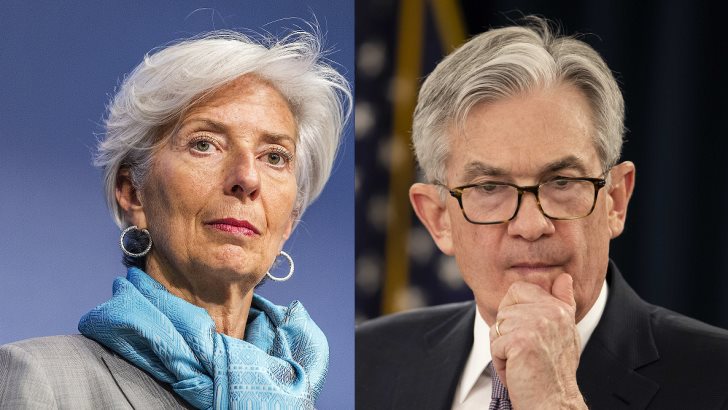Will FED cut rates before the ECB?
If you look at financial market pricing of future monetary policy for the Fed and ECB this year, you will see that the Fed is projected to cut rates just before the ECB.

Current market pricing suggests a greater than 50:50 chance that the Fed will make its first rate cut in March.
>> Will the FED lower rates regardless of the inflation target?
The Standard Bank said this is going to be wrong by some distance. In its view, the Fed could take up to six months longer than the ECB to trim rates for the first time. If correct, does this pose a risk to the euro?
Current market pricing suggests a greater than 50:50 chance that the Fed will make its first rate cut in March. For the ECB it is April. While we agree with the call for the ECB; projections for the Fed seem way out of line. We’d put the first Fed cut in Q3 and, if that’s as late as September, it could mean close to six-months between the first ECB rate cut and the first Fed reduction. On the face of it that looks a tough hurdle for the euro if it proves correct.
The Standard Bank’s reasoning for the long gap is based on a simple reading of the growth, employment and inflation disparities between the euro zone and the US. The euro zone is probably in a recession now or, if not, very close to one. The US is not, and nor do we see a recession this year. Inflation dynamics in the euro zone appear to us to be far more consistent with sustainable achievement of the 2% inflation target than they do in the US. And while the Fed’s dual mandate might mean that the bank will have to divert its attention – and its rate policy – should the unemployment rate start to surge, this could happen. At least not in the first half of the year.
So, what if these factors do prompt a fairly rapid rate cut from the ECB, but foot dragging by the Fed? Why won’t the euro succumb? There are two main reasons in our view. The first is that interest rate differentials are not as important as you might think. What’s key is that rate cuts from the Fed arrive at some point and produce strength in riskier assets like stocks and corporate credit. For, if rate cuts occur in an environment of improving risk sentiment, the dollar is likely to fall, even if the Fed is late to the rate-cut party.
In the past we’ve been more used to Fed rate cuts lifting the dollar but that’s because cuts have most often been in response to crisis situations, like the pandemic, or global financial crisis, when asset prices have been plummeting. As we’ve said before, the dollar is heavily used in funding asset positions and, when asset prices slump investors pay back loans quickly through buying dollars in the spot market and hence the dollar rallies in times of stress.
>> Will central banks cut rates as expected?
But, if rate cuts are synonymous with improving asset prices the process works in reverse and investors can shed some of the dollars they have borrowed in the spot market as asset prices rise. Hence, in this case the dollar is more likely to fall. It means that the crucial issue here is that the market must believe that asset-boosting Fed rate cuts are still coming even if the bank is ‘delayed’. If the market does not believe this, with cuts seen pushed out into 2025 or beyond, or worse still, new hikes delivered, then the dollar will likely rise, not fall.
The second issue, that’s a little harder to work out, is the political ‘interference’ in monetary policy that we are likely to see in the US this year given November’s election. Now we are not suggesting for one second that the Fed will Gerrymander its rate cuts to suit one or other candidate for the presidency. But you can be sure that if former President Trump is on the ballot, he will heavily criticise any pre-election rate cuts as a ploy to support Biden’s re-election campaign.
“In theory, this might push back Fed rate cuts, although that’s not our argument at all. Instead, our concern is that such criticism of the Fed could stir speculation that the bank will be one of the institutions that Trump will have in his sights should he win a second term. With that in mind, we’d argue that the highly politicised issue of monetary easing in an election year could potentially weigh on the dollar even if the Fed waits for others, such as the ECB, to go first”, said the Standard Bank.








